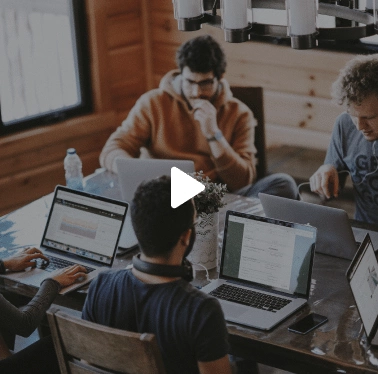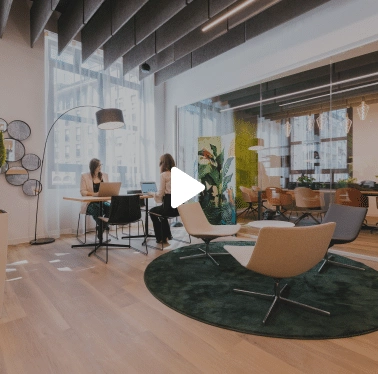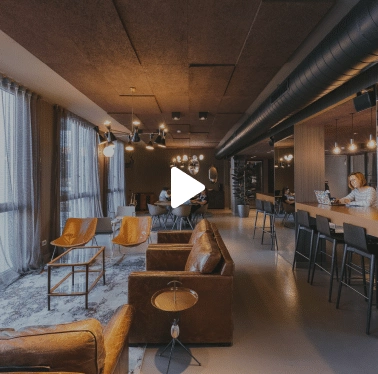The topic of member events is always a hot one for new operators and for experienced operators that know that those that play together stay together. Our new Community Manager University group has been sharing member event wins in our private Slack Group and some questions have come up from the newer folks in the group that I thought would be helpful to share with you.
Let’s start by talking about why member events are important and who will attend your member events.
WHY ARE MEMBER EVENTS IMPORTANT?
Many of us create a coworking space because we are passionate about helping our members be “in community.” We want to create a space where people can come together and ultimately form relationships and develop a strong community.
Some level of community will “just happen” when you put a bunch of people that have some things in common in the same room. But much of the process of creating community will need to be facilitated and developed over time through repeated interactions that build familiarity, trust, camaraderie, etc.
Member events are one effective method for bringing your members together on a regular basis and facilitating conversations and providing the right environment for people to redirect their focus from their work to the people around them.
Let me give you a non-coworking example.
If you listen regularly to the podcast, you know that I coach my daughter’s soccer team. Last year was my first year as a coach. She was 7 and in AYSO, that’s the U-8 division. There are no goalies at that age and no referees. We practiced once a week and had one game on Saturday morning. There was no tournament at the end of the season. The environment is very positive and not very competitive at that age. The parents would show up and stay for practice because at age 7, you feel like your kid is not quite ready to be left alone on a soccer field for an hour. As a matter of fact, last year, I had a parent fireman carry their kid off the field during practice because she had a major meltdown during a scrimmage.
During games on Saturdays, the parents and the coaches were somewhat commingled. The coaches stood right next to the parents and there was a lot of enthusiastic cheering and encouragement from all parties. One family was in charge of the healthy snacks for after the game although inevitably someone would also bring donuts.
We had such a great time getting to know each other that at the end of the season, we had a very social pizza party. The kids all signed a card for me and got me an Amazon gift card. We invited several of the parents to our annual holiday party and are still friends.
This year, things got more serious in the U10 division. Now there are goalies and the parents sit on the opposite side of the field from the coaches. There are three referees for every game. The parents now drop their 8-10 year olds off at practice and get them at the end or arrange a carpool. We also played on a turf field this year so no snacks or beverages were allowed. That meant there was no socializing over granola bars and gatorade at the end of the game.
The girls at this age are really rewarding to coach because they’re older and there’s less daisy picking during practice. They pay attention and they want to learn skills. But at the end of the season, I felt significantly less fulfilled than last year and I reflected on why that was. It was all due to the lack of community that we built with the parents. I knew the name of the parents from sending them constant email announcements about game times and photo days, but that’s all I knew. We didn’t make any new friends. There was no end of year pizza party. It was a dramatically different experience in terms of the community that we built as coaches.
If this year’s soccer season was a coworking space, I’d find a new one. Now, I absolutely won’t stop coaching because the community dynamic has completely shifted, but I miss the days where we could both coach the kids and make new friends with the parents.
Member events are important because they facilitate the consistency of interactions that we require to build relationships. We don’t get to know someone by nodding at them at the coffee machine. We get to know someone when we’re in a situation that forces interaction. And then we do it again in 2 weeks and again in 2 weeks and at some point, we get beyond “What do you do?” And into “what are you working on?” “Do you outsource your social media?” “How do you find good engineering talent?” “How was the ski trip last week?”
WHO WILL ATTEND YOUR MEMBER EVENTS?
Not everyone.
Do not get discouraged as you start working on your program, if you have a small turnout at some events or even all of your events. You could start thinking “our members don’t want events.” I’ve gone down that path. It’s almost never true.
Each of your members is human and wants some form of community.… but you may have some true introverts that want to feel the presence of community and may not attend your events. You might have some entrepreneurs in high growth mode that simply can’t prioritize your member events even though they want to attend and get to know more members. It may simply take you time to figure out what events resonate with your members in order to get them to show up.
Remember two things about attendance.
- Your members are paying to be a part of your coworking space for a number of reasons. They probably all like the fact that you host member events. But each member will have a list of reasons for joining your space and attending member events might be #1 on the list or it might be #5 on the list.
- Steve King, an expert researcher in the coworking industry, suggested on our podcast conversation (episode # 69) that we should consider the 80/20 rule when it comes to member events. 20% of our members will be gung-ho about events and attend most of them. 80% will either never come or will attend sporadically.

5 TIPS TO HELP YOU DEVELOP A SUCCESSFUL MEMBER EVENTS PROGRAM FOR YOUR COWORKING SPACE:
- How Often to Host?
- What to Host?
- Apply the KISS principle.
- Set Clear Expectations with your Team.
- Test, Evaluate and Evolve your Program.
1: HOW OFTEN TO HOST MEMBER EVENTS:
“Intensity makes a good story. Consistency makes progress.” (quote from @RPstrength on Instagram).
Set a realistic goal for hosting member events 2-4 times a month.
The frequency of your events will depend on:
- The capacity of your team to plan and execute the events
- The budget that you can allocate for member events
- The frequency that seems to work for your members – not so many that people feel overwhelmed and don’t attend, but enough that if they have schedule conflicts with some events, they don’t miss every event for the month.
Hosting one member event each month may not be often enough to create repetitive interactions that help people to get to know each other, get comfortable and build relationships.
Hosting one member event each month also may not integrate new members quickly enough. You want to have immediate “connection wins” when a new member joins. You will have other methods for integrating new members but having them experience a member event and observe relationships between members in the space is one of your biggest wins with new members.
Under the “What to Host” section below, we’ll give you a framework for creating an event calendar.
2. WHAT TO HOST:
Eventually, you will survey your members and learn more about what they want. But at the beginning, you will likely test some events and adjust based on feedback. It can be hard to ask brand new members of a brand new space to tell you what they want. To some extent, they expect you to anticipate what they want. Like Steve Jobs and the iphone. But most of us are not Steve Jobs, so put together a framework of types of events, test some of them and then go to your members and ask them what they want more of and less of. And also ask what times of day work best for them for events. We can generally say that members will vote with their feet, but it is worth understanding how the time of day impacts their ability to attend.
For example, my Community Manager is so amazing that if I could, I would clone her and give you each one of her as a Valentine’s Day gift…. hosted an event at 1 pm on a weekday. The turnout was very low. I suspected it would not go well, but I didn’t want to interject my bias into her effort to test. So I let her try it. And we learned… People feel like they need to do work after lunch and will generally say “no” to member events at that time.
My new Community Manager has been with us for about six months – enough time for her to put out a good sample of her event offerings and now she is surveying the membership for event feedback that she can integrate into her 2020 event planning. She dropped a very simple survey into a free Google Form (consider inserting a list to check off):
- What member events have you attended this year?
- What member events would you like to see more of?
- What member events would you like to see less of?
- What time of day do you prefer to attend member events?
My Community Manager created a 2020 coworking space member event planning tool for our Community Manager University members. They get exclusive access to the full grid with event ideas filled in for each category across each month, but you can get the grid template here.
First, consider the question: What needs can your community events solve for your members?
Let’s consider four buckets of member events:
- Social
- Business growth
- Personal growth
- Member appreciation
Social events might include events such as happy hours, potlucks, bbqs, trivia hour.
Business growth events might include educational events such as leveraging LinkedIn for your business, a lunch and learn on accounting for your small business, a panel on how to raise money for your startup, etc.
Personal growth events might be speakers on parenting, bourbon tastings, coffee cuppings, paint and sip classes, etc.
Member appreciation events might be events that you host simply to brighten your members’ day, give them an unexpected treat, or delight and surprise them. Unlike social events, you are not bribing members to get them to socialize with other members. This is a “no strings-attached” thank you moment. Yogurt parfait bars for breakfast, smoothie bowl afternoon breaks, an assortment of healthy bars set out next to the coffee bar on a Wednesday, etc. I like to mix these in for that group of members that we mentioned earlier, that will not prioritize member events, but that wants to feel like they are included in some of the treats.
Test member events across these buckets and see which ones resonate with your members. Once you’ve had a couple of months under your belt, survey your members. Talk to your most active members informally and send out a survey form asking for input.
When you find a member event that seems to really resonate, consider making it your signature event. For example, 25N Coworking hosts a monthly “Pitch and Catch” event where members present business ideas or challenges and ask their colleagues for input/feedback.
A suggestion I will share regarding events: Let the person running the events pick the events that excite them. Over time, you’ll need to make sure that those events overlap with your members’ preferences. But know that it’ll be a bit of an uphill battle to get a Community Manager to plan an event that they care nothing about, especially if they don’t love event planning in the first place. The Community Manager’s enthusiasm for and promotion of the event will be over 50% of the success of the event, so lean in the direction of letting her choose the events even if you’re unsure of how they’ll turn out.
My Community Manager loves games and crafts. One activity she’s added in to the schedule is a Scrabble session where the member with the highest scoring words for the day gets bragging rights. She also likes to host baked good decorating sessions for holidays. I didn’t think that type of activity would fly with our male/tech-startup heavy population, but who knew that we have a number of British Baking Show fans in our space… Win/win!
3. APPLY THE KISS PRINCIPLE:
It is not always the case, but most likely you will win with simple consistency vs. hosting one big shindig each month. Most of us will manage a member event budget that does not allow us to order sushi for our entire membership once a week. Some of us might and that’s a unique value proposition that I’d personally like to experience… 🙂
Keep It Stupid Simple.
KISS events are:
- Aligned with your members’ interests.
- Relatively easy for your team to plan and execute.
- Easy for your members to attend.
- Budget-friendly.
As entrepreneurs, we like to use the mantra “We can do hard things.” We can. But not everything should be hard. Things that we want our team to do regularly should have a simple cadence that makes them easy to repeat.
Set Clear Expectations With your Team
Ideally, you want your team to be able to plan a member event calendar and execute on it independently. You can opt-in to attending events, but you likely won’t attend all of them. If you have multiple spaces, you simply won’t be able to keep up.
The key to success is to set clear expectations with your team. Member events should own a spot on your weekly team meeting agenda. Ask your team to present a quarterly event plan. Set a budget for the month and let your team work their plans around the budget.
I once had a community manager that was getting a little burned out and she was becoming really inconsistent in hosting member events. Looking for an easy solution, she decided to order lunch. I logged into the info account to look for something and happened to see the catering order email confirmation. She had an order placed that was roughly $30/member for lunch. I asked her to cancel it and find a more reasonable solution. After that, I’ve always reviewed the budget with my team to avoid misaligned expectations.
4. WHAT SHOULD YOUR BUDGET BE FOR YOUR MEMBER EVENTS?
Here are some factors to consider when determining your budget:
- Always remember that retaining members is much less expensive than finding new ones. Member events drive retention. Consider them a marketing expense from a mental accounting perspective.
- Consider your brand and who you serve when you are planning member events.
On the far end of the spectrum, there’s a brand in Denver that caters to business owners that are already fairly successful and are in growth mode. They take member appreciation very seriously. They keep member preferences on file and will surprise and delight members each month.
For example, they’ll hand-deliver a morning latte with a single rose to a member that loves coffee and flowers. Not directly expensive (lattes and one rose won’t break the bank), but takes more staff time to execute on individual preferences.
On the other end of the spectrum is the “pizza and bagels” mentality. Yes, these are very inexpensive offerings for a member event and yes, people respond to free food… But try to consider your responsibility to help your members with their energy management. Your members do not do their best work after consuming cheap, empty carbs and fat.
If community meals are a goal, try the potluck approach. Try a community salad bar day – you bring the greens and protein and ask your members to contribute toppings. Or Taco Tuesday – you bring the beef and shells – your members bring the toppings.
If you struggle with potlucks and healthy meal options are out of the budget, stick to snack breaks, happy hours and events that aren’t centered around food.
What do you need to Spend to get Members to Attend?
It may take time, but with some experimentation, you should be able to find events that are budget-friendly still compelling to your members to entice them to break away from their work to learn or socialize.
If your membership simply doesn’t respond to your simple, budget-friendly efforts, you may need to resort to bribing them and making your events less frequent in order to manage your budget. Go all out on a monthly member lunch. If you do this, consider capping the attendance and requiring RSVPs for the event in order to manage your budget.
Can you Get Member Events Sponsored?
We often get asked if a coworking space can find sponsors for member events. Yes! I think spaces are most successful in this effort when:
- They get good attendance to member events.
- They open their member events to the public to get better attendance.
- They get a sponsor that benefits from direct exposure to your community – i.e., a lawyer or an accountant that will easily get business from your members once they know, like and trust them.
- The sponsor can do a personal intro during the session.
- The sponsor can benefit from getting insights from your members.
- The sponsor has a corporate mission that aligns with your membership or the content of your event series.
5. TEST, EVALUATE AND EVOLVE YOUR PROGRAM
Develop a member event schedule that you commit to test for a quarter. You will typically not have enough data points after a month to know what works and what doesn’t. Holidays, school schedules and time of year can greatly impact member attendance at your space and at events.
Make sure that your team is excited about the plan, the content overlaps with some of their personal passions and they do not feel overwhelmed by executing the events without your help. You may choose to help with the events, especially in your first few months of business, but you will want your team to confidently host events without you.
Ask your team to make notes in a shared document after each event. They can be short notes addressing:
- What went well
- What did not go well?
- What should we do differently next time?
- Did this seem to be the right day of the week and the right time of day to host this event?
- On a scale of 1-10, 10 being the highest, would we host this event again?

What member events have you hosted that have been home runs?
More coworking trends and how-to’s can be found on the Everything Coworking Podcast.
If you are considering opening a coworking space, check out my ebook: 8 Steps to Creating a Profitable Coworking Space that you Love to Run.
We’d love to hear from you – join our conversation in the Everything Coworking Facebook Group!







